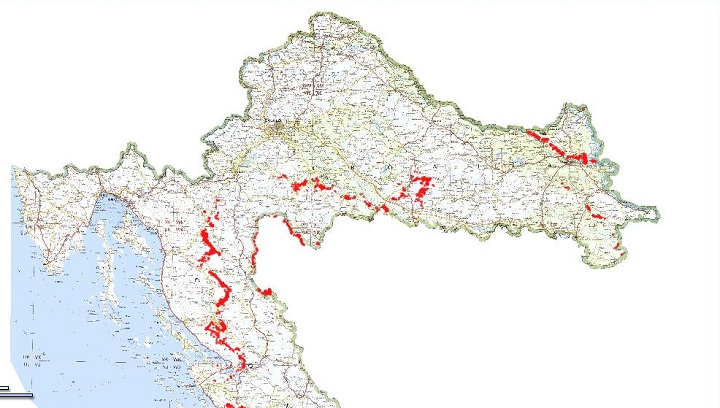Croatia has opened its border to refugees and migrants trying to reach Western Europe, but in doing so those making the overland trek could be faced with life-threatening obstacles.

There are roughly 50,000 landmines left over from Croatia’s 1991-1995 war for independence from the former Yugoslavia (now Serbia), believed to be spread over a 500 square-kilometre span of the country.
After Hungary erected razor-wire covered barriers at its border with Serbia, where thousands of people have tried to cross into the European Union’s visa-free travel zone, Croatian Prime Minister Zoran Milanovic said his country is “ready to accept and direct” people hoping to skirt around Hungary’s barriers to get into Austria, via Slovenia, and onward to Germany and other Western European countries.
READ MORE: Thousands flood train station in Austria hoping to reach Germany
“Barbed wire in Europe in the 21st century is not an answer, it’s a threat,” Milanovic said.
According to the United Nations Mine Action Service, the mines and other unexploded ordnance (UXO) still contaminate areas in 77 towns and municipalities in 10 of the 21 counties in Croatia.
“During four years of armed conflict in Croatia, mines were laid by all the warring parties, mainly to protect defensive positions, which changed frequently, but also in areas of strategic importance, such as railway lines, power stations and pipelines,” reads a portfolio on the UNMAS website. “The majority of suspected mined areas are woods and forests followed by agricultural land, underbrush, meadows and pastures.”
There are also concerns about landmines and UXO that may have been dislodged and washed away during floods that ripped through the Balkans in May 2014.
READ MORE: How refugees are using Google Maps, social media to cross borders
According to The Indpenedent, Croatian officials say contaminated areas have warning signs — more than 12,000 signs across the country.
But posts on the Facebook page “Dear refugees: Welcome to Croatia” warn refugees to be cautious of minefield areas.
A map on the Croatian Mine Action Centre website shows a heavily contaminated stretch of eastern Croatia, near Serbia.
Reuters reported the Croatian government plans to send landmine experts to the country’s border with Serbia.
Meanwhile, the international aid agency Doctors Without Borders said Wednesday the landmine risk demonstrates the need for “safe and legal routes” for refugees and migrants.
And, the volunteer initiative Migration Aid Hungary is encouraging those crossing the Serbia-Croatia border to stick to roads and stay out of fields.
Croatia has seen more than 500 landmine-related deaths — including some 60 mine removers — and more than 1,400 injuries since the end of the war.
READ MORE: Hungary declares emergency, seals border, detains migrants
The Croatian Mine Action Centre is committed to eliminating “anti-personnel mines” by 2019.
The country had, as of 2013, spent more than 500 million euros to clear the estimated 90,000 landmines that were planted during the four-year war, according to Dijana Plestina, head of the country’s de-mining office, in an interview Deutsche Welle.
She estimated it would take a further 500 million euros to completely rid the country of landmines.



Comments